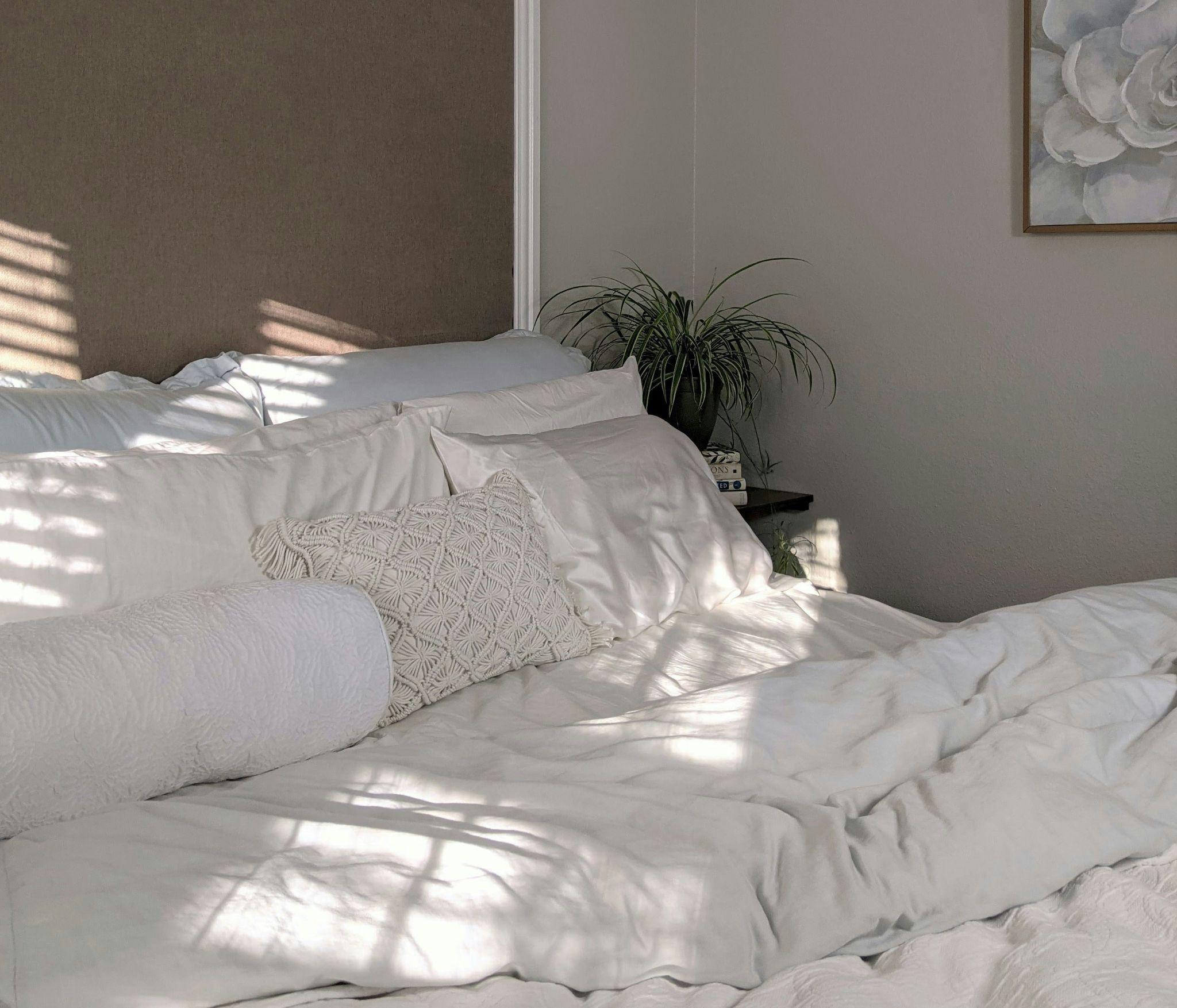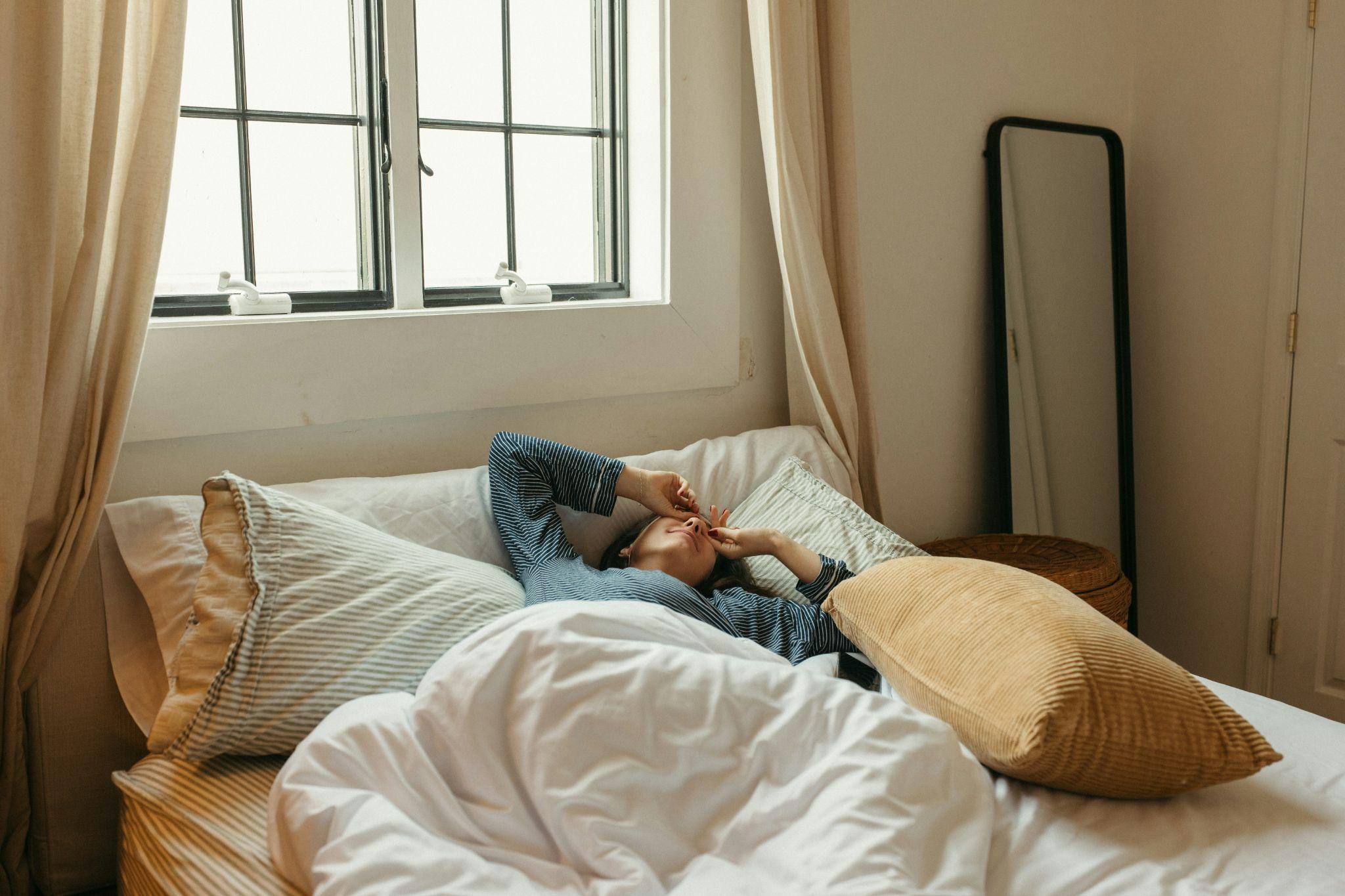Image from Unsplash
We often underestimate the profound impact our surroundings have on the quality of our sleep. Yet, countless studies show that even minor adjustments to our sleep environment can make a world of difference in how well we rest and recover each night. From the mattress beneath us to the air circulating in the room, every element plays a crucial role. For instance, choosing non-toxic, breathable bedding from trusted sources like Or & Zon can significantly reduce exposure to harmful chemicals while enhancing comfort. As more people seek healthier lifestyles, understanding and optimizing the sleep environment has become a cornerstone of overall wellness.
The Science Behind Sleep Quality
Sleep is not simply a passive state; it’s a highly complex biological process. Our brain cycles through different stages of sleep, including light sleep, deep sleep, and REM (Rapid Eye Movement) sleep. Each phase contributes to critical functions such as memory consolidation, cellular repair, and hormone regulation. Disruptions to these stages, often caused by environmental factors, can lead to poor sleep quality and long-term health consequences.
According to the Centers for Disease Control and Prevention (CDC), insufficient sleep has been linked to chronic conditions such as obesity, diabetes, cardiovascular disease, and even early mortality. This underscores the importance of creating an optimal sleep environment that promotes uninterrupted rest.
Noise: The Silent Sleep Disruptor
One of the most overlooked factors in sleep quality is ambient noise. Whether it’s street traffic, a noisy neighbor, or even the hum of electronics, noise can prevent the brain from reaching the deeper, more restorative stages of sleep. In some cases, even sounds that do not fully wake a person can cause micro-arousals, leading to fragmented sleep.
Experts recommend using white noise machines or earplugs to mask disruptive sounds. Additionally, soundproofing techniques, such as double-glazed windows or thick curtains, can significantly reduce noise pollution and create a more serene sleep environment.
Light Exposure and Circadian Rhythms

Image from Unsplash
Light exposure plays a pivotal role in regulating our circadian rhythms, the internal clock that governs our sleep-wake cycle. Excessive artificial light, particularly blue light emitted from screens, can delay the production of melatonin, the hormone responsible for inducing sleep.
To mitigate this, it’s advisable to limit screen time at least an hour before bed. Using blackout curtains can also help block external light sources, allowing for a darker, more conducive sleeping environment. According to the National Institute of General Medical Sciences, maintaining a consistent light-dark schedule can help stabilize circadian rhythms, leading to improved sleep quality.
Temperature and Humidity Control
Temperature is another critical factor. The body’s core temperature naturally drops during sleep, and a cool room can facilitate this process. The ideal bedroom temperature generally falls between 60 to 67 degrees Fahrenheit (15 to 19 degrees Celsius). Overly warm or cold environments can disrupt this balance and impair sleep.
Humidity levels also play a role. Air that’s too dry can irritate the respiratory tract, while excessive humidity can encourage the growth of mold and dust mites. Using a humidifier or dehumidifier can help maintain optimal humidity levels, enhancing both comfort and health.
The Role of Air Quality
Air quality is frequently overlooked when considering sleep environment. Pollutants, allergens, and volatile organic compounds (VOCs) from furniture, paints, and cleaning products can contribute to respiratory problems and allergies, interfering with sleep.
High-efficiency particulate air (HEPA) filters and indoor plants known for air purification, such as snake plants or peace lilies, can significantly improve air quality. Regular cleaning and ventilation also help reduce dust and allergens, contributing to a healthier sleeping space.
The Psychological Component: A Sanctuary for Sleep
Beyond physical elements, the psychological aspect of a sleep environment is equally important. Cluttered, disorganized spaces can evoke feelings of stress and anxiety, making it harder to unwind.
Creating a tranquil and aesthetically pleasing bedroom can foster relaxation. Incorporating calming colors, soft lighting, and minimalistic decor can transform the bedroom into a sanctuary for sleep. Establishing a nightly routine, such as reading or practicing mindfulness, can further signal to the brain that it’s time to rest.
The Importance of Bedding and Sleep Accessories
The materials we sleep on and under directly affect comfort and health. Non-toxic bedding, such as organic cotton, bamboo, or linen, minimizes exposure to harmful chemicals and allergens. As emphasized by resources like Or & Zon, opting for natural, breathable fabrics helps regulate body temperature and moisture, contributing to a more restful sleep.
Pillows and mattresses also warrant careful selection. An unsupportive mattress or pillow can lead to musculoskeletal discomfort, preventing deep sleep. Investing in high-quality, ergonomically designed bedding is an investment in long-term health.
Technology’s Role in Optimizing Sleep
Modern technology offers several tools to enhance sleep quality. Sleep tracking devices can provide valuable insights into sleep patterns and help identify disruptions. Smart thermostats can adjust room temperature automatically, ensuring optimal conditions throughout the night.
However, technology should be used judiciously. Overreliance on screens and gadgets can counteract their intended benefits. The key is to find a balanced approach that integrates technology without introducing new sources of disruption.
Sleep Disorders and Environmental Factors

Image from Unsplash
Certain sleep disorders, such as insomnia, sleep apnea, and restless leg syndrome, can be exacerbated by environmental conditions. For example, poor air quality may worsen sleep apnea symptoms, while high noise levels can trigger insomnia.
Individuals experiencing persistent sleep issues should consult healthcare professionals. Addressing environmental factors often forms a crucial part of comprehensive treatment plans for sleep disorders.
The Broader Impact on Mental Health
Quality sleep profoundly influences mental well-being. Poor sleep has been linked to mood disorders such as depression and anxiety. A supportive sleep environment can help break the vicious cycle where stress leads to poor sleep, which in turn worsens mental health.
The American Psychological Association highlights that adequate sleep enhances emotional regulation, cognitive function, and resilience to stress. Therefore, optimizing one’s sleep environment can serve as a powerful intervention for improving overall mental health.
A Growing Public Health Concern
Sleep deprivation is increasingly recognized as a public health issue. The U.S. Department of Health and Human Services reports that one in three adults do not get sufficient sleep on a regular basis. This has prompted initiatives to raise awareness about sleep hygiene and environmental optimization as preventative health measures.
Community efforts, workplace policies promoting work-life balance, and educational campaigns can all play a role in addressing this growing concern. By recognizing sleep as a critical pillar of health, society can foster environments that support better sleep for all.
Practical Steps to Improve Your Sleep Environment
Creating an ideal sleep environment doesn’t require a complete overhaul. Here are some practical steps anyone can take:
- Invest in non-toxic, breathable bedding materials.
- Use blackout curtains to eliminate external light sources.
- Maintain a cool, consistent room temperature.
- Use white noise machines or earplugs to mask disruptive sounds.
- Incorporate calming colors and declutter the bedroom.
- Use air purifiers and ensure proper ventilation.
- Limit screen time before bed to reduce blue light exposure.
Your sleep environment is more than just a room where you close your eyes; it’s a dynamic space that directly influences your health, mood, and overall well-being. As awareness grows about the profound impact of environmental factors on sleep, more individuals are taking proactive steps to optimize their sleeping spaces. Whether through small adjustments or comprehensive redesigns, prioritizing your sleep environment can yield significant, long-lasting benefits for both physical and mental health.





















